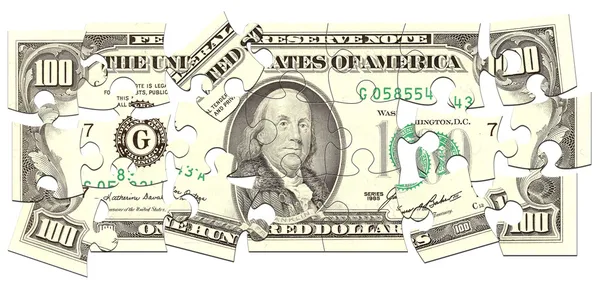Money Puzzles (SECOND-HAND SCOOTER & LOW FINANCE)
Money Puzzles
«IF YOU'LL GIVE me your water pistol," says little Tommy to his playmate, <TIl let you have my dump truck." This kind of trading is called «bartering." In primitive societies, it is the only way in which things can beb«bought" and «sold."
Think about it a moment and you will see what a poor system this is. A man who wants to sell his cow and buy a horse will be unable to do so until he happens to meet another man who wants to sell his horse and buy a cow. It may be years before he finds such a man. And suppose a man wants to trade his cow for a sheep that belongs to one friend and a pig that belongs to another. He can't slice his cow in half and trade each half separately! So you see, in any complicated society where many things are bought and sold, it is necessary to have something called money; something that can be
split up into any amount one wishes, and which has a value that everyone can agree on.
Almost anything can and has been used in the past for money, but today money consists either of coins made of metal or printed paper money. Few uses of arithmetic are more important than learning how to handle money problems. The next five puzzles will test your ability along these lines, and perhaps teach you a few things you did not fully understand before.
SECOND-HAND SCOOTER
BILL SOLD HIS motor scooter to Tom for $100. After driving it around for a few days Tom discovered it was in such a broken-down condition that he sold it back to Bill for $80.
The next day Bill sold it to Herman for $90. What is Bill's total profit?
SOLUTION
This little puzzle never fails to start arguments. Most people take one of the following three positions:
(1) We don't know what the scooter originally cost, so after the first sale, we have no way of knowing
whether Bill made a profit or not. However, since he bought it back for $80 and sold it again for $90, he clearly made a $10 profit.
(2) Bill sold his scooter for $100 and bought it back for $80. He now has the same scooter plus $20 that he didn't have before, so his profit is $20. We learn nothing from the next sale because we don't know the scooter's real worth, so Bill's total profit is $20.
(3) After Bill buys back the scooter, his profit is $20 as just explained. He now sells it for $10 more than he just paid for it, making an additional profit of $10. Total profit, therefore, is $30.
Which is correct? The answer is that one is just as good as another! In a series of transactions involving the same object, the "total profit" is the difference between what one first paid for it and the amount one has at the finish. For example, if Bill had paid $100 for the scooter, then he ends up with $110 and we can say that his total profit is $10. But because we don't know the scooter's original cost, we have no way of saying what his final profit is.
Each answer is correct if we are willing to accept some meaning, other than the usual one, of the phrase "total profit." Many problems in life are like this. They are called "verbal problems" or "semantic problems" because they have different answers depending on exactly how one understands the words that are important in the problem. They have no "correct" answers until everyone agrees on the same meaning for the terms.
LOW FINANCE
"I SEEM TO have overdrawn my account," said Mr. Green to the bank president, «though I can't for the life of me understand how it could have happened. You see, I originally had $100 in the bank. Then I made six withdrawals. These withdrawals add up to $100, but according to my records, there was only $99 in the bank to draw from. Let me show you the figures." Mr. Green handed the bank president a sheet of paper on which he had written: Withdrawals Amount left on deposit
25 25
10
8
5
2
$100
15
7
2
o
$99
«As you see," said Mr. Green, "I seem to owe the bank a dollar." The bank president looked over the figures and smiled. "I appreciate your honesty, Mr. Green. But you owe us nothing."
"Then there is a mistake in the figures" "No, your figures are correct." Can you explain where the error lies?
SOLUTION
There is no reason whatever why Mr. Green's original deposit of $100 should equal the total of the
amounts left after each withdrawal. It is just a coincidence that the total of the right-hand column comes as close as it does to $100. This is easily seen by making charts to show a different series of withdrawals. Here are two possibilities: Withdrawals Amount left on deposit
$99 $1
1 0
$100 $1
Withdrawals Amount left on deposit
$1 $99
1 98
1 97
97 0
$100 $294
As you see, the total on the left must always be $100, but the total on the right can be made very small or very large. Assuming that withdrawals can never involve a fraction of a cent, try to determine the smallest possible total and the largest possible total that the right-hand column can have...





No comments